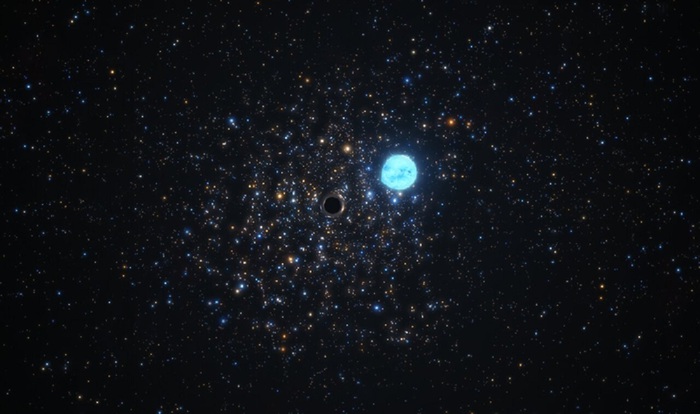Discovered a black hole 'hidden' in a star cluster: it is the first time that one has been discovered outside the Milky Way through the effects produced by its gravitational field on a star and opens new horizons.
To find out thanks to the Very Large Telescope of the Southern European Observatory (Vlt - Eso) was an international group led by Sara Saracino of the University of Liverpool John Moores in which the Astronomical Observatory of Palermo of the National Institute of Astrophysics also participated. (Inaf) whose results are published in Monthly Notices of the Royal Astronomical Society.
"A bit like Sherlock Holmes chasing a criminal looking for missteps, we observed every single star in this cluster with a magnifying glass to look for evidence of the presence of black holes without seeing them directly," explained Saracino. which allowed to identify a 'criminal': a black hole with a mass 11 times that of the Sun whose presence, inside the star cluster NGC 1850, alters the orbit of a large star that is nearby. Identifying a black hole is a very difficult task, only in recent years has it been possible to do it with certainty by recognizing the X-ray emissions that occur in certain phases or by the gravitational waves produced when black holes merge with each other or incorporate a neutron star. .The new method developed by the Sa Saracino team now opens up important new possibilities for observing black holes: "this is just one of the 'wanted criminals', but when you have found one you are well on your way to discovering many more".
The recognition of the effects of black holes on the orbit of nearby stars was made possible by the data collected in about 2 years by the Muse instrument (Multi Unit Spectroscopic Explorer) installed on the Vlt telescope in the Chilean Atacama desert.
“Muse - commented Sebastian Kamann, of the Liverpool Institute of Astrophysics and one of the authors of the study - has allowed us to observe very crowded areas, such as the innermost regions of star clusters and analyze the light of every single star in the vicinity.
From here we got information on thousands of stars in one fell swoop, at least 10 times more than we can get from any other instrument. "

